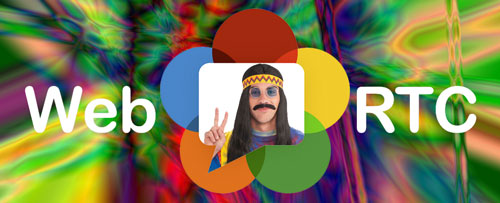I have a phone on my desk and know how all the buttons work (my mother is very proud). I have a familiar experience with the telephone both for making & receiving calls. Like you, I don’t make many traditional phone calls anymore with more of my communications are happening on a ‘smart’ device. However, I’m typically using some other familiar interface (Google Talk, Skype, Viber, one of many soft phones of my own choosing) or simply a dial pad. I know the ‘buttons’ here as well.
WebRTC is fixing to upend and even reverse the entire experience of communications.
Imagine if every person you called, the experience was different. This is in fact what WebRTC is offering. Me, the called party, has total control over how communications will be presented and what you (the caller) see on your screen. I will define the experience. As the caller, you’re likely to get a different experience with every person or company you contact using WebRTC. Different buttons, fonts, colors, graphics, look n’ feel. There will be no standardization.
Your immediate thought is, “this is gonna be damn confusing“. But stop for a second and think.
Isn’t this just how the web works today? Are all websites alike? Well no, they’re not yet you and I and the world have great abilities to quickly navigate websites and extract the information we want. So imagine then that WebRTC offer the ability to easily offer mass personalization of our communications to a level far beyond simple fonts n’ colors. It’s the ability to customize the caller experience to your own tastes & requirements. Think of it as a Myspace for communications.
Perhaps when calling me, I might choose to display a headshot, recent Tweets, recent blog posting titles, video window, chat screen, recent postings on Slideshare, upcoming travel from Tripit, Linkedin updates. Or I might simply present a blank screen with a microphone. The choice will be entirely mine. Think of it like WordPress with Widgets (in fact, it may well be WordPress).
I could also have different URL’s that I publish. One for business and one for personal. For security, I might require you have a PIN to call me (so just having my URL won’t be enough) or a Captacha code to eliminate telemarketers. Before allowing you to connect to me, I might ask why you’re trying to call me with a text input box. Again, I’m control of the experience.
The current phone system doesn’t offer you much control. You can either answer my ringing phone or not. If you’re lucky it might should you the caller ID (and even more lucky a name) and you can figure out who this person is and what they want.
This is a lot to take in and there will be many naysers. Similar to early websites, the first WebRTC deployments may be initially “off the mark” . There will be security & use issues to be solved (how do you provide inbound calling line ID when you’re IP address changes all the time?). But the simplicity of deployment, ability to make speedy changes and sheer innovation on this front will hopefully power communications to a new level.
